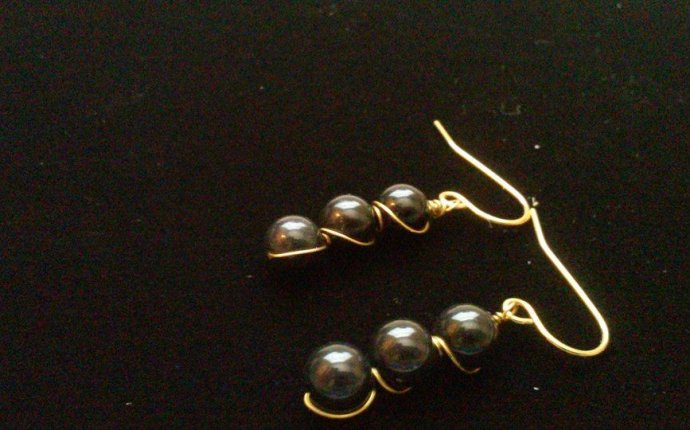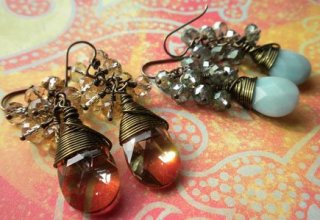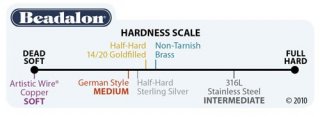
Copper wire earrings
of a piece of wire is a measurement of its width (diameter). Gauge is often abbreviated as "ga", thus 20 gauge = 20ga. There are two main gauge systems used to determine wire size for crafters and artisans. American Wire Gauge is typically (but not always) the way jewelry wire is measured in the United States and Canada. Standard Wire Gauge (SWG) is typically (but not always) the measurement system used in Great Britain. Most other European countries measure wire size in millimeters.
Gauge numbers work the opposite of how you'd expect. The larger the gauge, the smaller the wire's diameter. This is because the numbers were originally determined from how many times a piece of wire had to pass through a draw plate before it was done being sized. The more times through the plate, the thinner the wire.
The more times through the plate, the thinner the wire.
- 32-28 gauge are extremely thin. They are typically used for intricate wire work like weaving, crochet, and Viking knit.
- 26-24 gauge are good sizes for stringing pearls and beads with small holes. 26ga also works well for Viking knit.
- 22-20 gauge are good all-purpose, versatile wire sizes. Thin enough to be able to string on most beads. If you use wire (or work-harden softer wire), these gauges are also sturdy enough to hold their shape for making handmade chain, ear wires, eye pins, jump rings, and lightweight clasps. 20ga works well for bracelet and necklace wire.
- 18-16 gauge work well for making sturdy clasps and jump rings (see about for more info). They're also great as necklace and bracelet wire. Solid (not plated or filled) wire in these gauges is commonly used to make rivets. 18ga makes good ear wires too.
 Depending on the, 16ga gauge may be difficult to bend.
Depending on the, 16ga gauge may be difficult to bend.
- 14 gauge is primarily used to create thick, extra-strength components such as clasps, rings, cuff bracelets and bangle bracelets. It can also be used to create frames for resin and mixed media projects, as well as structural support for many styles of jewelry. Solid 14ga wire can be used to make rivets. Depending on the, this gauge may be difficult to bend. 14 gauge wire is often only available in dead soft temper.
- 12 gauge is popular for rings, neck collars, bangle bracelets and cuff bracelets. It is usually only available in dead soft, and may require heavy-duty wire cutters or a jeweler's saw.
- 10 gauge is also a good weight for bangle bracelets and cuff bracelets. It is usually only available in dead soft, and generally requires heavy-duty jewelry tools for both cutting and shaping.
Wire Shapes
The shape of a wire refers to what you see when you look at a cross section of it (i.e. the cut end).| Round wire is the most common wire shape, and is the standard shape used in most wire working. | |
Square wire is sometimes chosen for purely aesthetic reasons, since the corners of square wire lend a different look to finished jewelry. It also has a practical advantage when you want to place several pieces of wire flush against each other. The flat sides of square wire will lay flush in a way that round wire can't. This makes square wire preferable in banding designs. This makes square wire preferable in banding designs. |
|
| Half round wire is typically used to connect several adjacent pieces of square wire. The flat side of the half-round wire is placed against the square wires, and the rounded side remains exposed in the finished design. This is called . | |
| Twisted (aka fancy) wire is used to provide textural and aesthetic qualities to wire work. It can be formed from round wires or square wires. You can buy ready-made twisted wire, or make your own with a pin vise or Beadalon® wire twister. When making your own, keep in mind that your finished fancy wire will be a thicker gauge than the individual wires you start with. |









